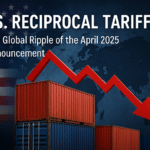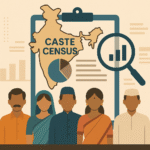The 1971 Indo-Pak war remains one of the most significant and transformative events in South Asian history. More than just a military conflict, it marked the end of a long-standing internal crisis within Pakistan and gave birth to a new nation, Bangladesh. It also reshaped regional politics, redefined India’s role on the global stage, and left a lasting imprint on global human rights discourse.
Historical Background: Seeds of Dissent
When British India was partitioned in 1947, Pakistan emerged as a geographically bifurcated state with two wings: West Pakistan (now Pakistan) and East Pakistan (now Bangladesh), separated by more than 1,000 miles of Indian territory. Despite East Pakistan’s larger population, political and military power remained firmly in the hands of the West Pakistani elite. East Pakistanis, who were predominantly Bengali-speaking, faced cultural suppression, economic discrimination, and political marginalization.
The situation escalated in 1970 when the Awami League, led by Sheikh Mujibur Rahman, won a landslide victory in Pakistan’s first general elections. The party secured 160 out of 162 seats allotted to East Pakistan, gaining a majority in the 300-seat National Assembly. However, instead of transferring power, the military regime led by General Yahya Khan postponed the parliamentary session. This decision ignited mass protests and civil disobedience in East Pakistan.
Operation Searchlight and Humanitarian Crisis
On March 25, 1971, the Pakistan Army launched Operation Searchlight, a brutal military crackdown targeting students, intellectuals, and civilians in Dhaka and other cities. The violence led to widespread atrocities, with estimates of the dead ranging from several hundred thousand to over a million. Nearly 10 million refugees fled to India, triggering a humanitarian and political crisis.
Gary J. Bass, in his acclaimed work The Blood Telegram (2013), reveals how American officials, particularly U.S. Consul General Archer Blood in Dhaka, reported the systematic massacre of Bengalis, but the Nixon administration continued to support Pakistan due to its geopolitical alliance. India, bearing the brunt of the refugee crisis, saw itself morally compelled and strategically justified to intervene.
India’s Intervention and the Liberation War
India, under Prime Minister Indira Gandhi, initially sought international diplomatic solutions. However, repeated global indifference and mounting internal pressure forced India to act. On December 3, 1971, Pakistan launched preemptive airstrikes on Indian air bases, prompting a full-scale war.
India responded with a swift and coordinated military campaign on both Eastern and Western fronts. The Indian Army, in alliance with the Mukti Bahini (Bengali resistance fighters), made rapid advances. Within 13 days, Pakistani forces in East Pakistan surrendered in Dhaka on December 16, 1971. Over 90,000 Pakistani soldiers were taken as prisoners of war, making it the largest surrender since World War II.
As documented in Srinath Raghavan’s 1971: A Global History of the Creation of Bangladesh (2013), India’s military strategy was meticulously planned, and its diplomatic moves—including the Indo-Soviet Treaty of Friendship—ensured regional and international support or neutrality.
Geopolitical and Human Rights Implications
The emergence of Bangladesh altered the geopolitical map of South Asia. It shattered the myth of a united Pakistan based solely on religion, highlighting the importance of linguistic and cultural identity. For India, the war was a diplomatic and military triumph that affirmed its leadership in the region.
Internationally, the war raised important questions about the responsibility to protect civilians from state-sponsored atrocities. The silence of global powers, particularly the U.S. and China, during the genocide in East Pakistan remains a blemish on Cold War-era diplomacy.
As Richard Sisson and Leo E. Rose point out in War and Secession: Pakistan, India, and the Creation of Bangladesh (1990), the conflict showcased both the failures of Pakistan’s centralized authoritarianism and the power of a people’s movement for self-determination.
The 1971 Indo-Pak war was more than a victory for India or a defeat for Pakistan—it was a profound moment for the people of East Pakistan, who gained their long-denied right to self-rule. It stands as a testament to the resilience of a people who, despite unimaginable brutality, forged a new path forward.
The liberation of Bangladesh in 1971 marked not just the birth of a new nation but also the beginning of a deep strategic partnership between India and Bangladesh. India’s support in the war for independence and its role in sheltering millions of refugees created a historical bond with the newly formed state. For decades, especially under Sheikh Hasina’s leadership, this relationship remained anchored in mutual trust, economic cooperation, and shared security concerns. However, the 2024 political upheaval in Bangladesh, which led to Sheikh Hasina fleeing the country amid a military-backed coup, has drastically altered this equation. Bangladesh now appears to be warming its ties with Pakistan, while its historical ally India watches with concern and strategic discomfort.
1971 and the India-Bangladesh Strategic Embrace
India’s decisive military intervention in December 1971 helped dismantle West Pakistan’s military control over East Pakistan, leading to the creation of Bangladesh. As Gary J. Bass writes in The Blood Telegram (2013), India’s involvement was as much a humanitarian necessity as a strategic maneuver. For decades after independence, under the leadership of Sheikh Mujibur Rahman and later his daughter Sheikh Hasina, Bangladesh maintained a largely pro-India foreign policy, focusing on cross-border connectivity, anti-terror cooperation, water-sharing agreements, and cultural exchanges.
The Hasina Doctrine and India’s Trusted Partner
Under Sheikh Hasina, especially after 2009, India found in Bangladesh a reliable partner in South Asia. Hasina cracked down on anti-India insurgent groups operating from Bangladeshi soil and promoted a secular, democratic image that aligned with India’s regional vision. Agreements like the Land Boundary Agreement (2015) and the joint use of Chattogram and Mongla ports showed the extent of this strategic alignment. The shared fight against terrorism and the coordinated response to Chinese influence in the Bay of Bengal region kept the partnership robust.
2024 Coup and Sheikh Hasina’s Exile: A Diplomatic Earthquake
The political coup in 2024 that forced Sheikh Hasina to flee Bangladesh has dramatically reshaped South Asia’s diplomatic map. Amid growing allegations of authoritarianism and public discontent over economic challenges, Hasina’s government was overthrown with tacit backing from military factions. A caretaker administration took charge, claiming to restore democratic norms—but soon showed signs of pivoting foreign policy away from India.
The new regime has moved swiftly to rebuild ties with Pakistan, evidenced by recent diplomatic exchanges, defense talks, and economic overtures. This shift is viewed as an attempt to recalibrate Bangladesh’s foreign policy.
Bangladesh-Pakistan Rapprochement: Symbolism and Strategy
The warming of ties between Bangladesh and Pakistan is not merely symbolic; it reflects a deeper regional recalibration. This is particularly ironic, given the historical wounds of 1971, when Pakistani forces committed widespread atrocities in East Pakistan. Yet, in the realm of realpolitik, strategic interests often trump historical grievances.
The current rapprochement involves trade normalization talks, plans for cultural exchange programs, and joint military training proposals. Pakistan, isolated diplomatically in the region, sees this as a diplomatic win. For Bangladesh, this could be a move to diversify alliances and hedge against India’s growing alignment with the U.S. and its involvement in QUAD.
Strategic Dilemma
India now faces a serious diplomatic challenge. The erosion of trust and influence in Dhaka may not only affect bilateral relations but also India’s regional posture in South Asia and the Bay of Bengal. Bangladesh is vital for India’s northeastern connectivity, anti-insurgency operations, and maritime strategy. A friendlier Bangladesh-Pakistan axis could also provide China with an opportunity to further its influence in the region—particularly through the Belt and Road Initiative.
The relationship between India and Bangladesh, forged in the fires of war and nurtured over decades, stands at a precarious juncture. The 2024 coup has undone years of strategic trust. While history cannot be erased, present-day geopolitics shows that alliances are never static. As Bangladesh explores new alignments, India must recalibrate its diplomacy—balancing firmness with outreach, historical solidarity with forward-looking engagement.
References
- Bass, Gary J. (2013). The Blood Telegram: Nixon, Kissinger, and a Forgotten Genocide. Alfred A. Knopf.
- Raghavan, Srinath. (2013). 1971: A Global History of the Creation of Bangladesh. Harvard University Press.
- Sisson, Richard, and Rose, Leo E. (1990). War and Secession: Pakistan, India, and the Creation of Bangladesh. University of California Press.
- Bose, Sarmila. (2011). Dead Reckoning: Memories of the 1971 Bangladesh War. Hurst & Company.
- Mansergh, Nicholas. (1974). The Commonwealth Experience. Weidenfeld & Nicolson.
- Mitra, S. K. (2011). Politics in South Asia: Culture, Rationality and Conceptual Flow. Routledge.
- Schaffer, T. C., & Schaffer, H. B. (2011). How Pakistan Negotiates with the United States: Riding the Roller Coaster. USIP Press.
- Roy, M. (2020). “India-Bangladesh Relations: A Strategic Partnership in Transition.” South Asian Survey, 27(1).





